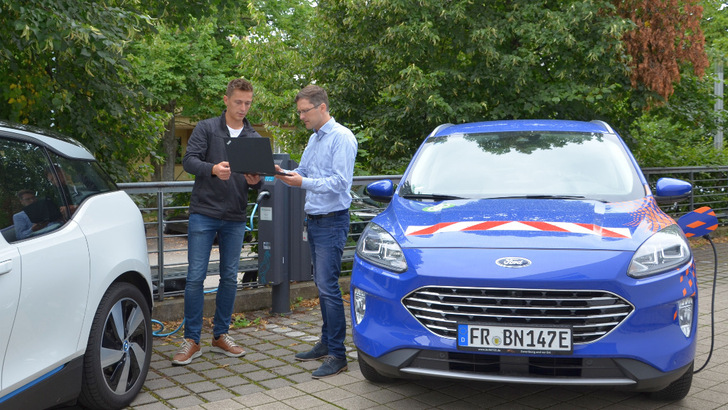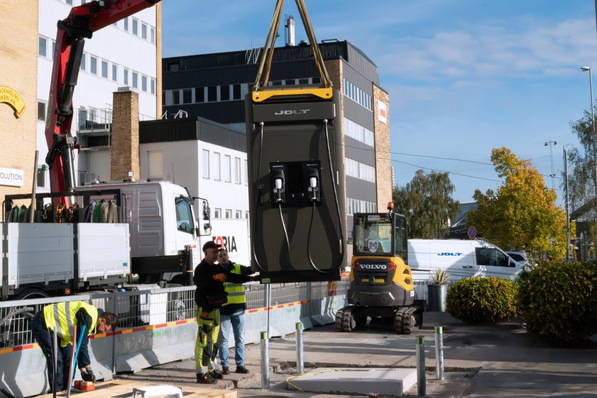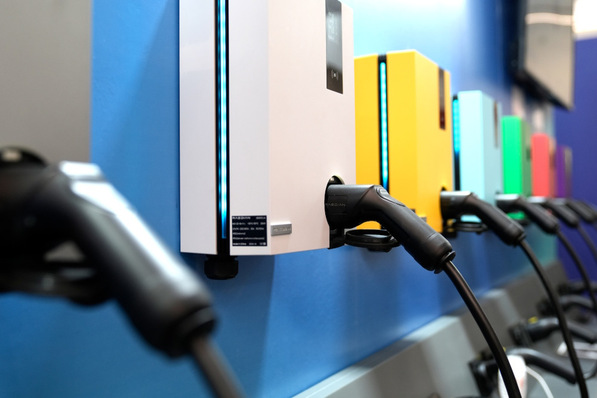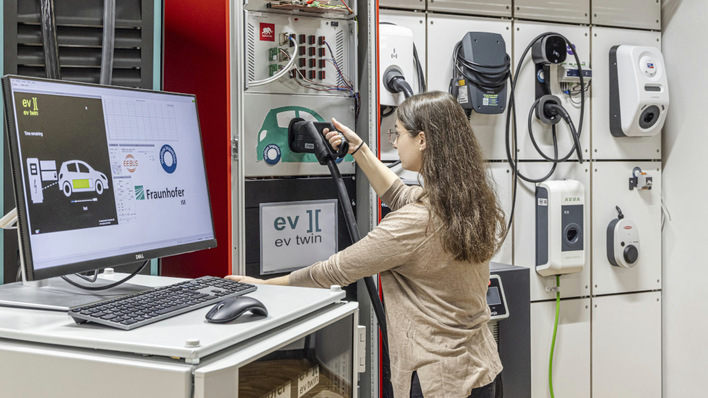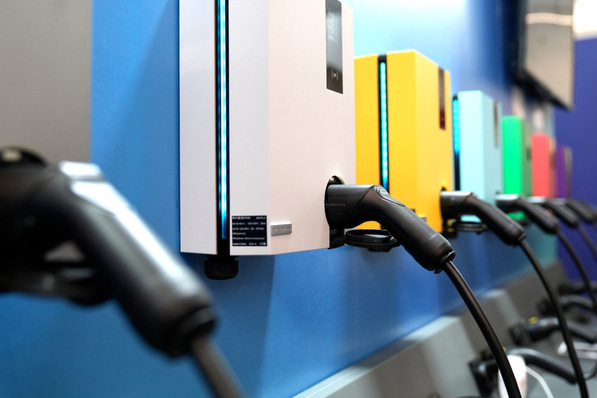For many people, the switch to electromobility is hindered by the fact that they do not know where they can charge their car. It is true that the expansion of the charging infrastructure is making considerable progress. But especially in cities, where the majority of people live in apartment buildings and park their cars on public streets, there is a lot of scepticism. Even if charging points are available nearby, it is not uncommon to fear that the charging points will be occupied and you will be left without traction power when you need the car.
Effects on the distribution network investigated
One variant, at least for a large proportion of the car owners concerned, is charging at the workplace. But here the question arises: Does the simultaneous charging of many electric vehicles at the workplace cause problems in the distribution grid? Researchers at the Fraunhofer-Gesellschaft have answered this question in a self-test.
See also: Fraunhofer Institute confirms life cycle assessment
To this end, they have set up a total of 480 charge points together with partners at 36 Fraunhofer institutes as part of the LamA - Charging at the Workplace project. At three of the institutes in Freiburg, Stuttgart and Dresden, the charging behaviour of the employees was scientifically investigated together with the effects on the distribution network. For this purpose, 20 charging stations were installed at the Fraunhofer Institute for Solar Energy Systems (ISE) in Freiburg alone. These were controlled with a charging management system.
Charging at the workplace - an optimal application
With a final practical test, the Fraunhofer Institute for Solar Energy Systems (ISE) and BN Netze, a subsidiary of the energy supplier Badenova, proved that an intelligent control in the grid control system protects the distribution grid from overloading when many users want to charge their vehicle at the same time. "LamA is a pilot model with the aim of decarbonising commuter traffic," says Jörn Schumann from the Fraunhofer ISE project team, describing the goal of the study. "Charging electric vehicles at the workplace is an optimal use case: the private vehicle is parked in the company car park all day anyway. By implementing charging stations in company car parks, electromobility can become a viable alternative for the masses. In addition, the results of the project can also be transferred to other fields of application such as shopping centres or petrol stations.
User requirements taken into account
However, it is important that charging is intelligently controlled. If all users were to charge their vehicles at the same time, the load limit on the transformer could be exceeded. In order to avoid an overload of the distribution network due to massive power peaks and thus possible damage to the infrastructure, the charging power must be regulated by a control logic.
Also interesting: Feed power back into the grid from the car
Central here is a charging algorithm that generates a plan of when which car will be charged and with what output. In addition to load forecasts that are relevant for the grid, user requirements such as the desired departure time are also taken into account here. The charging management system monitors and controls the charging process. It also reacts to external control signals in the event of an impending overload of the grid. The charging power is then reduced. "This mode of operation leads to a more even distribution of charging power throughout the day and reduces grid expansion costs at the system level," explain the Freiburg researchers.
Going beyond the limit
For the practical test, the Fraunhofer ISE scientists pushed the system to its limits. This is because they deliberately increased the load on the charging infrastructure in order to simulate limit violations. The aim here was to see how the system actually reacted in the stress test. It passed. Because as soon as the limit values were violated, the signal came immediately that the charging power had to be throttled, which the charging management then implemented. "Practical testing successfully showed that the e-vehicles can utilise the remaining capacity of the grid connection to specifically implement the charging requests," the researchers at Fraunhofer ISE proved with their project.
Advantages over public charging infrastructure
For BN Netze, this is not the first stress test the company has carried out with electromobility in mind. "We have already tested and optimised the monitoring and control of electric charging points and private charging stations in several projects and field trials. Charging at the workplace is an intelligent approach that offers many advantages over the arbitrary placement of charging columns in public spaces," emphasises Lukas Smoluch, who led the project at Fraunhofer ISE on behalf of the Badenova subsidiary. (su/mfo)


